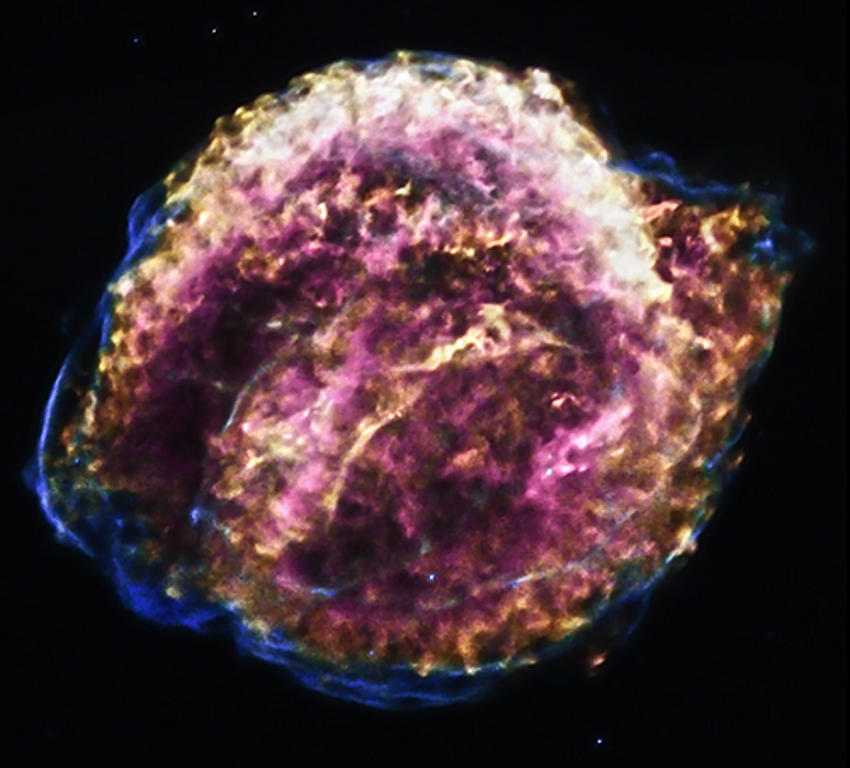
 Credit: NASA/CXC/SAO/D.Patnaude
Credit: NASA/CXC/SAO/D.Patnaude
Super Powerful Kepler Super Nova?
In 1604 sky watchers were astonished to see the sudden appearance of a "new star" brighter than the planet Jupiter. One of these witnesses was Johannes Kepler, who viewed the object first on October 17, 1604, and started to systematically study it. As a result, this object is now called Kepler's Supernova in his honor. Astronomers believe that Kepler's Supernova marked the sudden thermonuclear explosion of a white dwarf star that was pushed over its limit, a so-called "Type Ia" supernova. These explosions are important since they provide astronomers with a way to study the expansion of the Universe over enormous cosmic distances and times. Such studies have led to the conclusion that the Universe has expanded faster than it should have, due to a mysterious force called "dark energy". Because of this, understanding the way in which these Type Ia supernovae occur is an active area of astronomical research. The image above, from the Chandra X-ray Observatory, shows the complex X-ray glow of the ejecta produced by Kepler's Supernovae as it slams into material in the space around it. The Chandra observation shows a blue arc around one edge of the remnant, suggesting that the entire remnant may be speeding through space, producing a bow shock similar to a boat speeding on a lake. Detailed analysis of the Chandra data also suggest that the explosion may have occurred at a greater distance from earth than previously thought, and was much more powerful.
Published: September 17, 2012
<
HEA Dictionary ● Archive
● Search HEAPOW
● Other Languages
● HEAPOW on Facebook
● Download all Images
● Education ● HEAD
>

Each week the HEASARC
brings you new, exciting and beautiful images from X-ray and Gamma ray
astronomy. Check back each week and be sure to check out the HEAPOW archive!
Page Author: Dr. Michael F. Corcoran
Last modified Monday, 26-Feb-2024 17:45:54 EST


